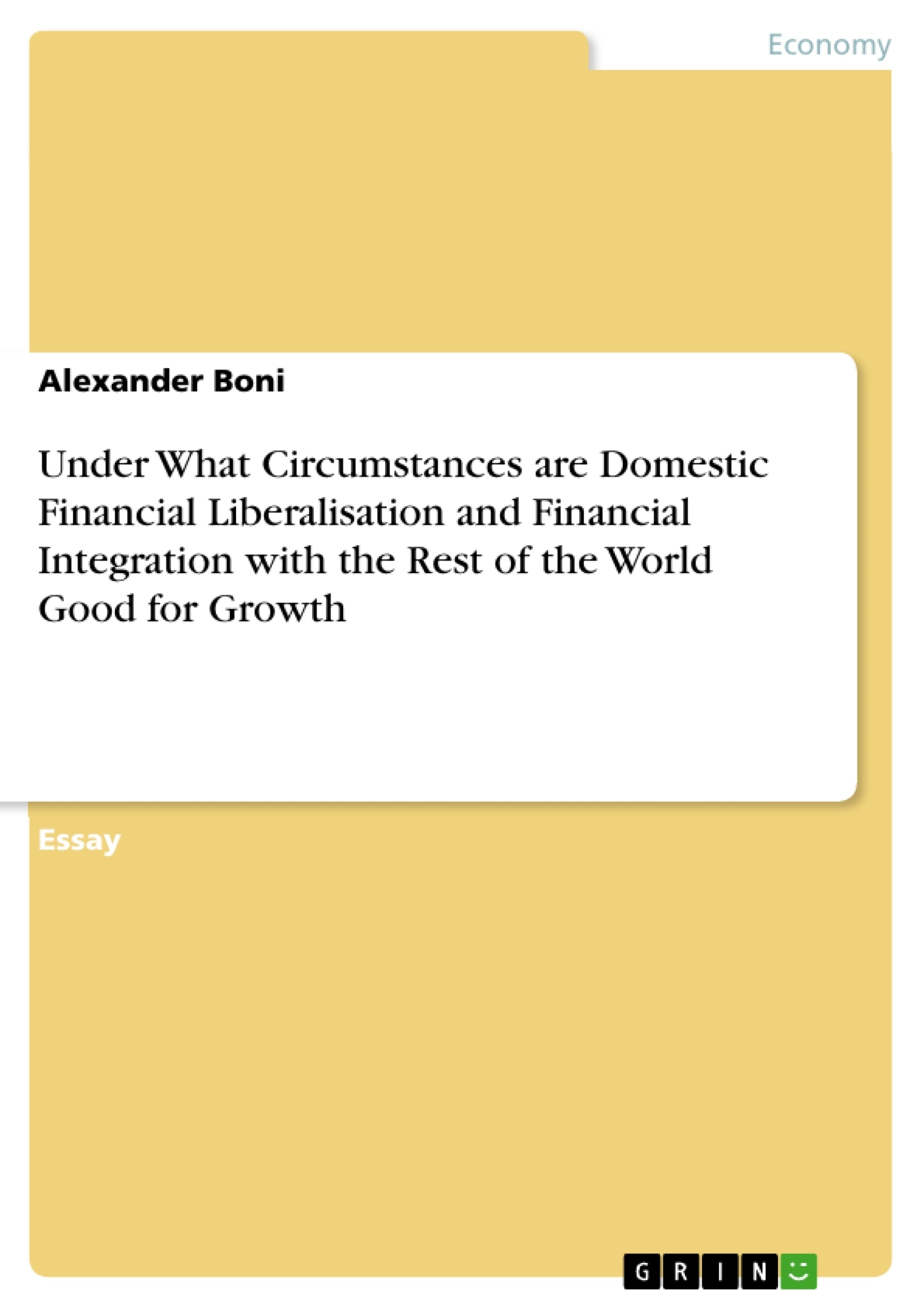An examination of neoclassical and endogenous growth theories and their theoretical implications on pursuing policies of domestic financial liberalisation and global financial harmonisation.
This essay determines what circumstances are required or are desirable when opening up a national economy to liberalise its domestic financial industry and integrate that industry with the rest of the world.
Inhaltsverzeichnis (Table of Contents)
- Under what circumstances are domestic financial liberalisation and financial integration with the rest of the world good for growth?
- Domestic Financial Liberalisation
- Financial Integration with the Rest of the World
- Timing and Maturity
- Financial Integration: A delicate case
- The argument for financial openness
Zielsetzung und Themenschwerpunkte (Objectives and Key Themes)
The main objective of this essay is to determine the circumstances under which domestic financial liberalisation and financial integration with the rest of the world are beneficial for economic growth. It aims to explore the link between these financial policies and economic growth, considering different phases of the economic cycle and the level of economic development.
- The relationship between financial liberalisation and financial integration with economic growth
- The importance of timing and maturity for effective implementation of these policies
- The role of foreign direct investment and its impact on productivity and growth
- The risks and benefits associated with financial openness and globalisation
- The importance of domestic financial development as a prerequisite for successful financial integration
Zusammenfassung der Kapitel (Chapter Summaries)
- This chapter introduces the topic of domestic financial liberalisation and financial integration with the rest of the world, defining these terms and outlining their relevance to economic growth. The essay explores the perspectives of neoclassical and endogenous growth theories on the role of savings ratios in promoting economic growth.
- The chapter delves into the specific aspects of domestic financial liberalisation, examining its impact on credit availability, directed investment, and official interest rate ceilings. It argues that financial liberalisation can boost entrepreneurship, potentially leading to increased productivity and growth, especially when combined with foreign direct investment.
- The chapter shifts focus to financial integration with the rest of the world, highlighting the risks and benefits associated with this process. It examines the potential vulnerability to external shocks and the possibility of crowding out domestic firms by multinational corporations. Despite these risks, the chapter emphasizes the potential advantages of well-sequenced and well-phased financial globalisation.
- This chapter explores the crucial role of timing and maturity in determining the effectiveness of financial liberalisation and integration. It considers the significance of developing a strong domestic financial system before engaging in global financial integration and argues that premature integration can lead to instability and detrimental consequences.
- This chapter delves deeper into the argument for financial openness, highlighting its potential to foster economic growth. It emphasizes the importance of a well-developed financial sector, which attracts foreign investment, facilitates wealth creation, and potentially reduces income inequality. The chapter concludes by suggesting that careful and gradual integration with the global financial system can yield significant benefits for an economy.
Schlüsselwörter (Keywords)
This text delves into the intricacies of domestic financial liberalization, financial integration with the rest of the world, and their impact on economic growth. Key terms include financial development, savings ratio, foreign direct investment, financial globalization, global trade, and external shocks. The essay explores the different perspectives of neoclassical and endogenous growth theories, analyzing the influence of factors like entrepreneurship, productivity, and capital allocation on economic growth. It also examines the crucial aspects of timing, maturity, and sequencing in the implementation of financial policies to maximize their benefits and minimize potential risks.
- Quote paper
- Alexander Boni (Author), 2010, Under What Circumstances are Domestic Financial Liberalisation and Financial Integration with the Rest of the World Good for Growth, Munich, GRIN Verlag, https://www.hausarbeiten.de/document/168249


